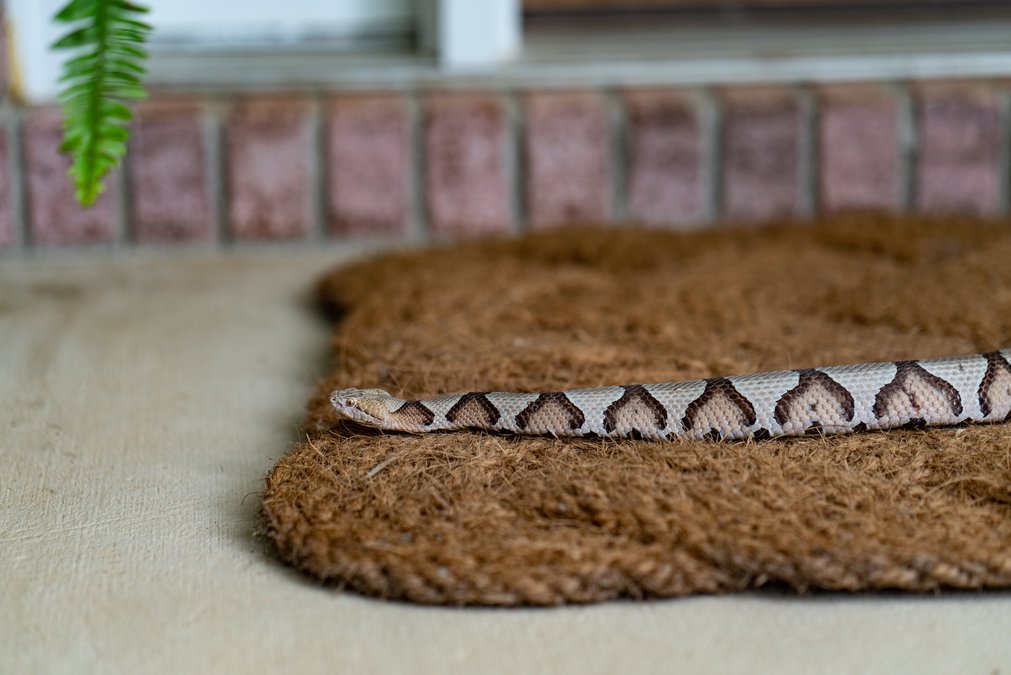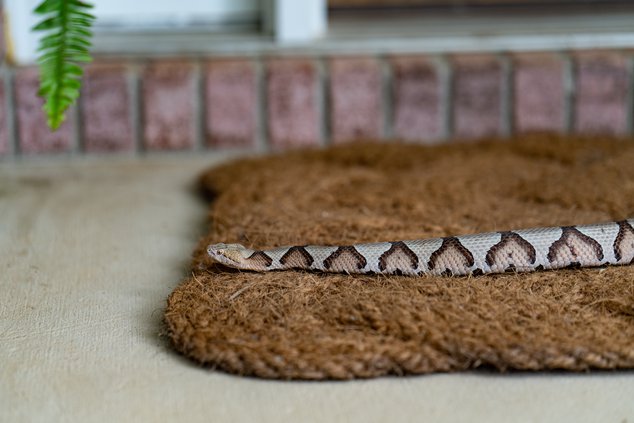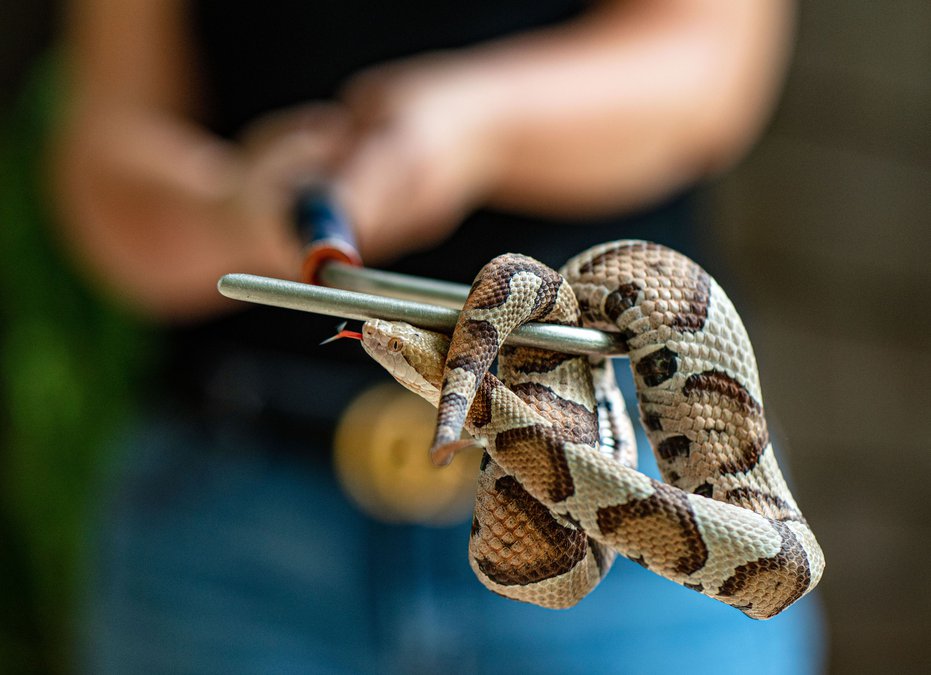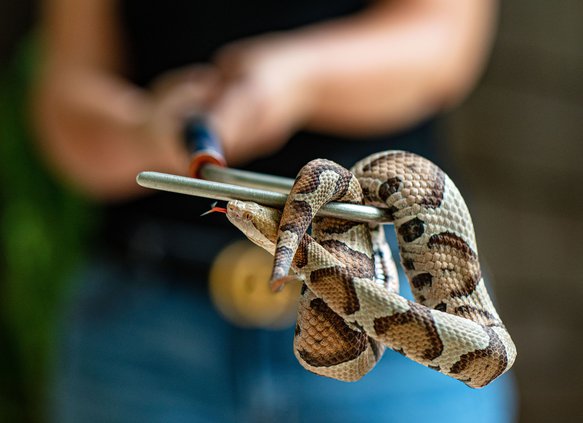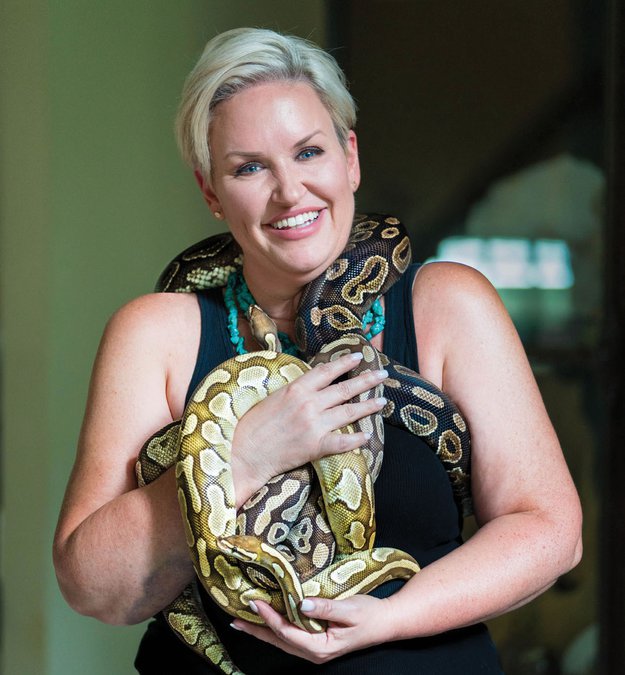This article appears in the August issue of 400 Life.
Inside Kim Mross’s home are various artifacts of her obsession. A coiled snake skeleton sits atop an amethyst rock on the living room coffee table. Nearby, in a glass case, is a whale vertebrae fossil. On a wall, shark teeth are displayed in chic frames. A taxidermized fox poses on the hearth.
She warned her husband of this. “Nobody understands my level of passion when it comes to wildlife,” Mross says she told him, but he was game, so she plunged further into the field. She is now a professional snake wrangler.
Mross regularly makes house calls to relocate snakes and works on movie and television productions around Georgia to clear the set of snakes, spiders, turtles and the like. She also runs All Things Wild North Georgia, a website that provides educational resources about wildlife native to the region.
Mross, though, was not allowed to have pets as a child living in Atlanta, she said. The neighborhood dogs and cats had to suffice.
Mross’ father, a fire chief, loved to camp, however, and he would identify wildlife for her during hikes, including snakes.
“He said, ‘Leave it alone and [it] won’t mess with you,’” Mross remembered. “So I never had that fear in me. I was always open-minded about wildlife.”
Mross’s first career was as a preschool teacher, but that was largely unfulfilling. Then, when she had her son, Cade, who is now 17, she focused on parenting. But Mross kept herself involved in the animal world and developed an expansive knowledge. She volunteered at animal shelters. She took animal rehab classes. She worked with area biologists. She helped conduct surveys of gopher tortoises in South Georgia.
Story continues below.


As social media emerged, Mross saw more and more people post pictures of animals they had found, particularly snakes, and she was struck by the comments she saw from other people. They often misidentified the snake or condoned killing it, even nonvenomous ones Mross knew to be beneficial to local ecosystems. Many commenters perpetuated old wives’ tales. Most of the comments were tinged with fear.
Mross started responding to bad information and in the process rehabilitate the snake’s image, even venomous ones. “Taking the villain status away from them,” Mross said. She added, “People only know of the bad things.”
Mross gained a reputation in social media communities as a source for sound snake knowledge. People started asking Mross to remove snakes from their property, so she got permits through the Department of Natural Resources for wildlife trapping, native species and nuisance control. She’d either relocate the snake, bring it to a local wildlife center as a rescue or take it in herself.
One day, she got a call from Los Angeles. The movie “Tag,” with the actor Jon Hamm, was filming in Georgia, and the production crew needed a snake wrangler. Mross went to the set in Stone Mountain and combed it for any potentially hazardous wildlife. It was relatively tame, Mross said, just rat and water snakes.
But Mross’ name started to get around, and she got more Hollywood work. She worked on the set of the movie “Irresistible,” with actor Steve Carell and director Jon Stewart, and has a contract with “The Walking Dead,” the wildly popular zombie television series. The locations are often remote, in areas where snakes are unharmed by human development, which can lead to some big discoveries.
“The snakes I’m catching are absolutely enormous — 4-foot copperheads, 7-foot rat snakes,” Mross said. “Where we’re at, no one’s killing anything, and there’s no houses, so these snakes are really old. They’re getting to their full size.”
They are the kind of habitats that snakes used to enjoy more of around the region, Mross said. As Georgia’s population continues to grow, particularly around metro Atlanta, the snake’s natural environment is dwindling, leading to more encounters with humans — and more Facebook posts.
“We’ve gotten rid of their habitat,” Mross said. “They can’t camouflage like they used to.” Mross added, “They’ve always been there; you just didn’t always see them.”
So Mross is as busy as ever. She’ll sometimes make between 10-20 house calls in a day. Pest control companies call for her services. Mross does educational programs in schools on native Georgia snakes during the fall and winter and works with the Georgia Reptile Society on outreach initiatives to promote reptile ownership.
Story continues below.
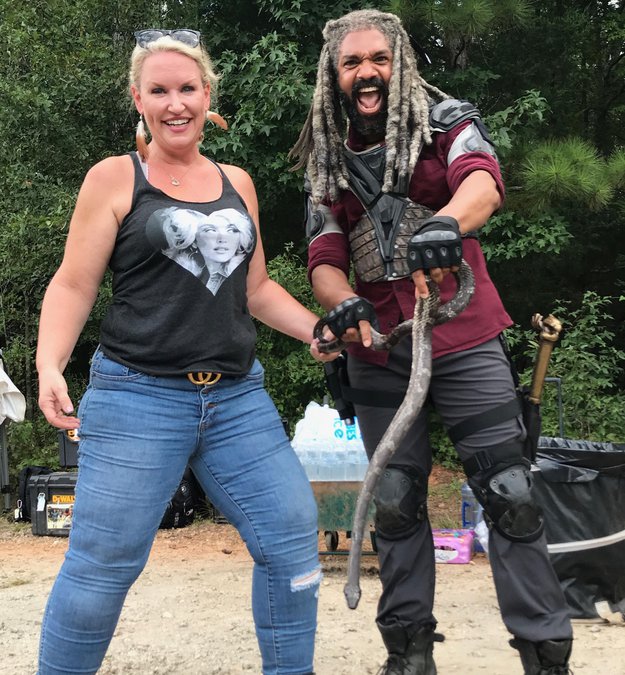
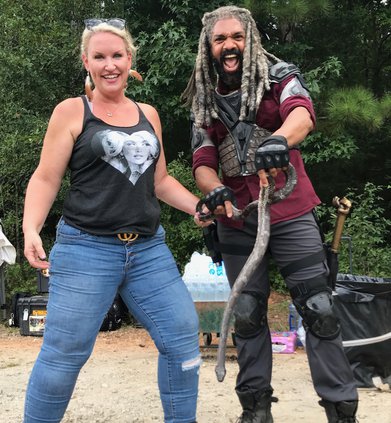
No surprise, Mross is one herself. She has a collection of reptiles in two rooms and the garage of her home just over the Forsyth County border into Cherokee County. Among them are three ball pythons named Marilyn, Moulder and Scully, along with Janice the timber rattlesnake and Lucille the copperhead. Mross also has an Australian blue-tongued skink (named Drago) and a tarantula (named Nicotero, after “The Walking Dead” make-up artist, Greg Nicotero.) All her reptiles are rescues.
Yes, rescuing a snake might still seem outrageous to some, but Mross has sensed a shift in public opinion toward snakes in the last three years. She sees more people sharing accurate information on social media, and fewer advocate killing snakes, especially nonvenomous ones that play an important role by eating rodents that can carry fleas or ticks.
“More people are embracing these armless, leafless creatures,” Mross said, “and it’s a beautiful thing.”
“This is the craziest thing I could have ever imagined,” Mross said. “I am proud to be the crazy snake lady in the community.”
To learn more about regional wildlife, visit Mross’ website All Things Wild North Georgia at www.allthingswildnorthgeorgia.com.
